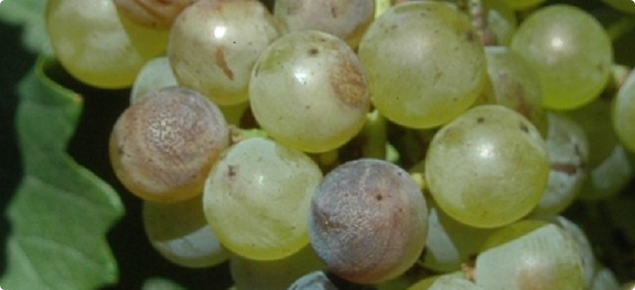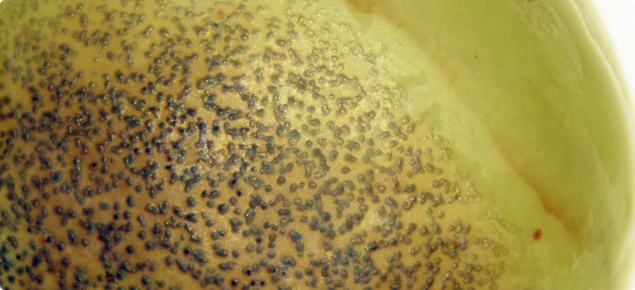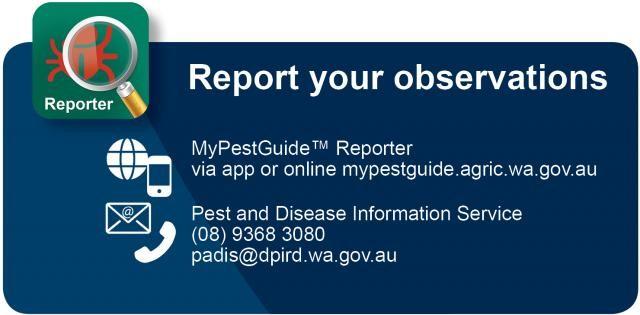What plants are affected?
Bitter rot affects both wine grapes and table grapes.
What do I look for?
- Bitter rot is most obvious on ripe fruit, post veraison (colour change).
- Concentric rings made up of spore bodies eventually cover the entire berry, and white berries turn brown.
- Berries soften and detach easily from the bunch.
- Berries can become mummified.
- The fungus also causes dark flecks on the vine’s leaves, shoots and stems.
- Fruit symptoms can be confused with other bunch-rotting fungi.
How does the disease survive and spread?
- The fungus overwinters on stem lesions, in grape mummies, and on plant debris.
- Spores are released during warm, wet weather and spread in splashing rain to all parts of the vine.
- The fungus invades fruit stalks (pedicels) and remains latent until the berry ripens.
- Full expression of bitter rot is favoured by temperatures between 22–35°C and high humidity.
What damage can this pest cause?
Bitter rot reduces grape yield and spoils the flavour of fruit, wine and any other products made from infected grapes.
Status in Western Australia
Greeneria uvicola (Berk. & M.A. Curtis) Punith. (1974) is absent from Western Australia and is a quarantine pest. It is a prohibited organism under section 12 of the Biosecurity and Agriculture Management Act 2007.
Western Australia's Pest Freedom for bitter rot is supported by general and specific surveillance and specific import requirements to prevent its entry. A person who finds or suspects the presence of bitter rot must report it to DPIRD.
Report suspect disease
Early detection and eradication will help protect Western Australian grape growers. Please make a report on MyPestGuide or contact the Pest and Disease Information Service (PaDIS) to report this pest.



